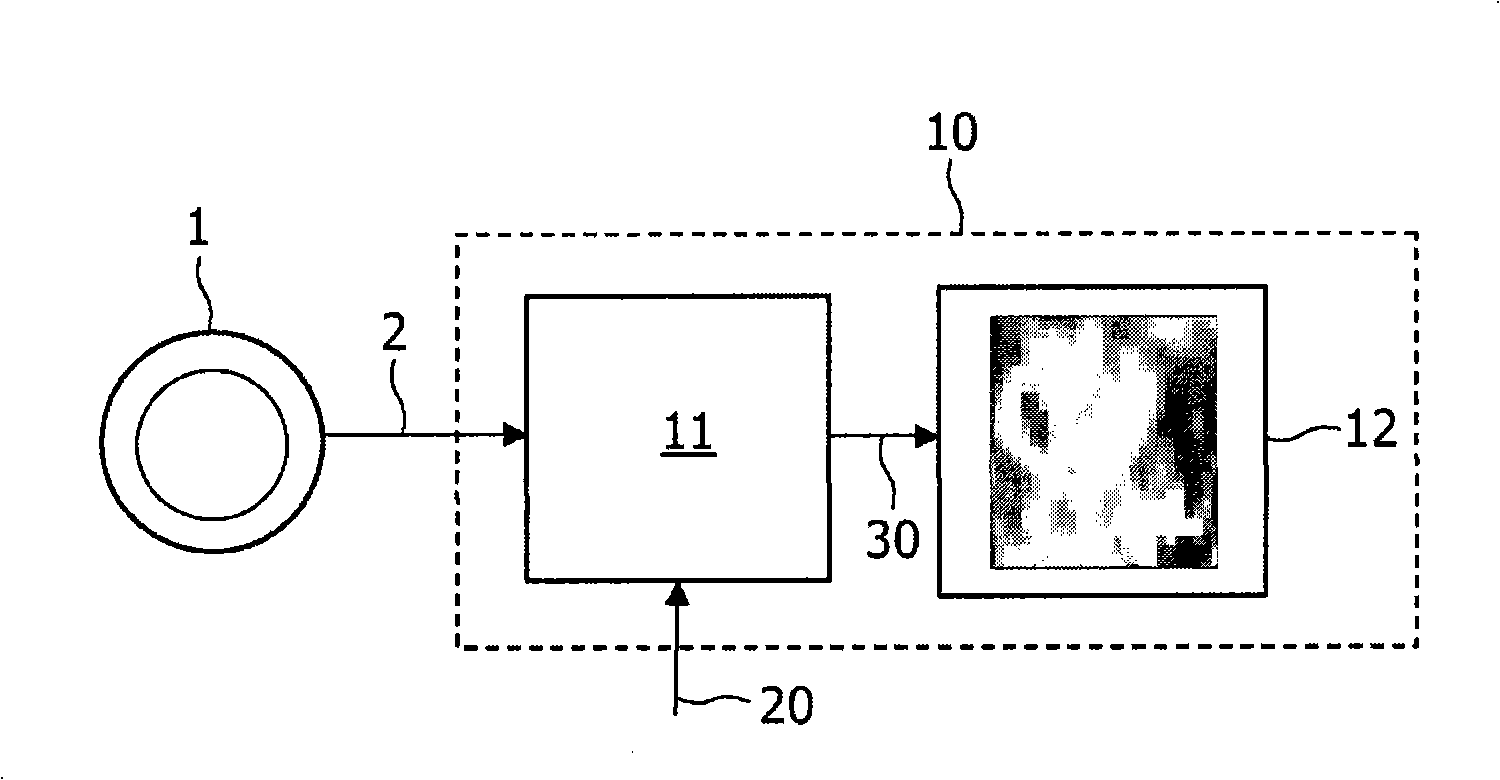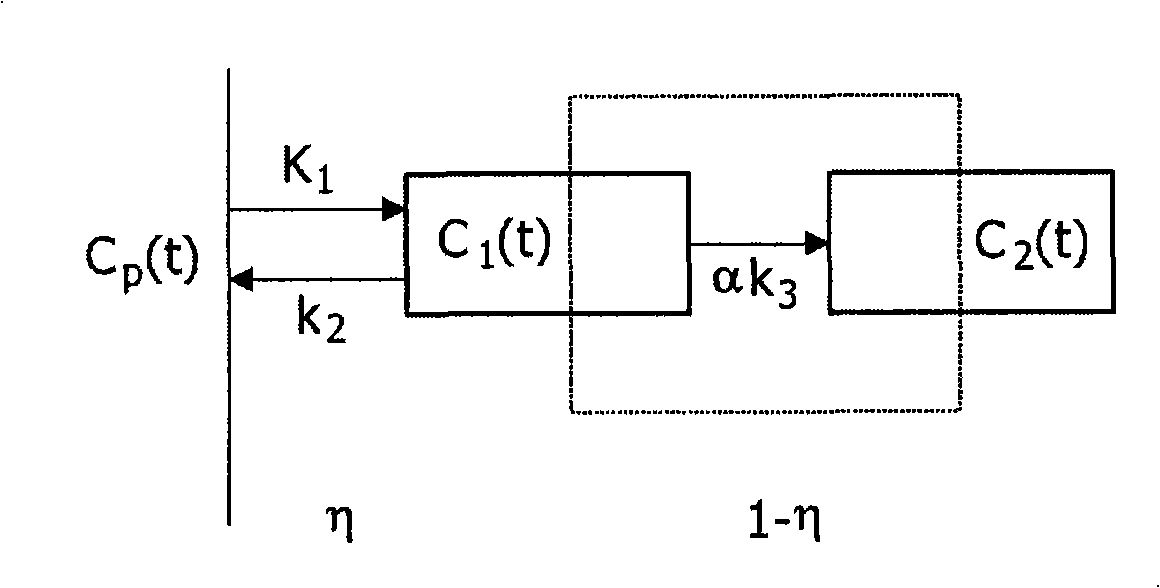Image generation based on limited data set
A technology of images and image sequences, applied in the field of images that map biological processes, to solve complex problems
- Summary
- Abstract
- Description
- Claims
- Application Information
AI Technical Summary
Problems solved by technology
Method used
Image
Examples
Embodiment Construction
[0043] figure 1 A device 10 is shown, which is arranged to operate in conjunction with a scanner 1 (for example a PET scanner) that can record a sequence of images 2 as a function of time, or record data representing such images 2. The image 2 sequence represents a scan of a local part of the human body after injection of a radiotracer or contrast agent. The image 2 sequence may represent, for example, FMISO data with missing time points. It is possible that the image is missing within a certain time range (for example, 0-90 minutes) after the injection. The signal processor 11 then processes the incomplete sequence of images 2 either directly from the scanner 1 or after being stored. The signal processor 11 also receives additional data 20 (e.g. literature-based data) regarding the range of motion parameters, and optionally an input function (e.g. blood clearance function data). The signal processor 11 then executes an iterative algorithm on the data 2, 20, including: applying ...
PUM
 Login to View More
Login to View More Abstract
Description
Claims
Application Information
 Login to View More
Login to View More - R&D
- Intellectual Property
- Life Sciences
- Materials
- Tech Scout
- Unparalleled Data Quality
- Higher Quality Content
- 60% Fewer Hallucinations
Browse by: Latest US Patents, China's latest patents, Technical Efficacy Thesaurus, Application Domain, Technology Topic, Popular Technical Reports.
© 2025 PatSnap. All rights reserved.Legal|Privacy policy|Modern Slavery Act Transparency Statement|Sitemap|About US| Contact US: help@patsnap.com



